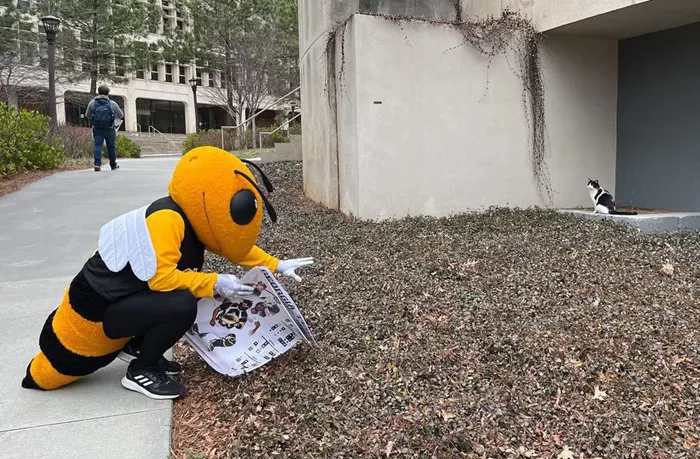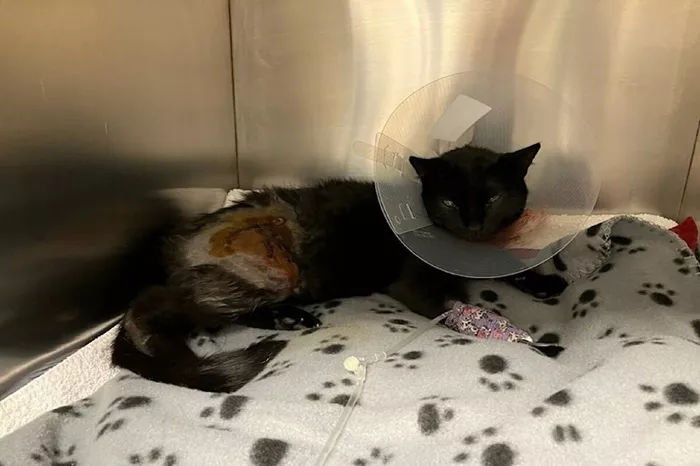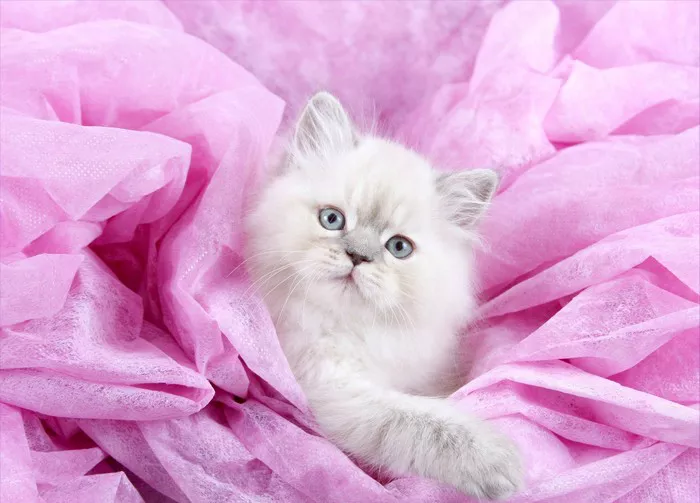While Georgia Tech officially boasts the Ramblin’ Wreck and Buzz as its mascots, a third, unofficial group of mascots has won the affection of many on campus: the campus cats. These furry friends have become a beloved part of daily life for students, faculty, and staff.
“They’re such an important part of so many people’s days on campus,” said Kandi Henry, a first-year chemical engineering student and treasurer of Campus Cats, the student organization that coordinates care for the cats.
Campus Cats re-registered as an official student organization at the start of this year after a period of inactivity during the pandemic. This past fall, the organization, with help from faculty and staff, began providing food and water stations for the cats, keeping track of sightings, building weather shelters, and securing veterinary care as needed.
Rachael Pocklington, a longtime Georgia Tech staff member, contributed by providing a food and water bowl for Jack, a tortoiseshell cat often seen at the gates of Bobby Dodd Stadium. “It warms my heart to know that so many people care about these cats,” Pocklington said. “It’s a huge community effort.”
The campus community has shown remarkable dedication, especially when a cat requires extra help. Gracie, a tabby cat known to frequent the Klaus Advanced Computing Building, exhibited dental issues and stopped eating earlier this year. In response, the campus community raised over $2,000 in 24 hours for her medical expenses. Gracie has since been adopted by Henry, who expressed pride in the support shown by the Tech community.
“She’ll need follow-up care, and even though she isn’t on campus anymore, I still hear from people willing to continue funding that,” Henry said. “She’s the light of my life, and it’s been heartwarming to know that she means that much to the community, too.”
Caring for Campus Cats
Campus Cats is now focusing on a trap, neuter, and release (TNR) program to prevent the campus cat population from growing uncontrollably. The organization is also working on an adoption process for well-socialized cats that can adapt to indoor living. For example, a tortoiseshell cat named Clove (renamed Jolene) living near 10th Street was recently adopted after being transitioned indoors.
Some campus cats have grown more comfortable with human interaction over time. Cats like Momo, once skittish, are now known for being friendly and affectionate. Daisy, often seen in a storm drain across from the Carnegie Building, now allows occasional petting.
While increased socialization aids in potential adoption, transitioning outdoor cats to indoor life can be challenging. Nonetheless, it is worthwhile for well-suited cats to avoid environmental dangers and diseases like Feline Immunodeficiency Virus (FIV) and Feline Leukemia Virus (FeLV). Gracie, for instance, tested positive for FIV, highlighting the importance of these efforts.
Tips for Interacting with Campus Cats
Henry and Campus Cats members advise understanding cat signals and giving them space. It’s crucial not to pick up or corner the cats. “It’s stressful for them, especially the less socialized ones,” Henry said. “Don’t be that person who pursues a cat until they’re trapped.”
The club maintains feeding stations across campus with a stockpile of cat food, so Henry discourages overfeeding the cats with treats and human food. “A couple of treats is OK, but don’t give them entire handfuls,” she said, emphasizing that human food can be dangerous and some cats might have medical issues.
Georgia Tech’s campus cats, supported by a caring community, continue to thrive and bring joy to those around them.






















